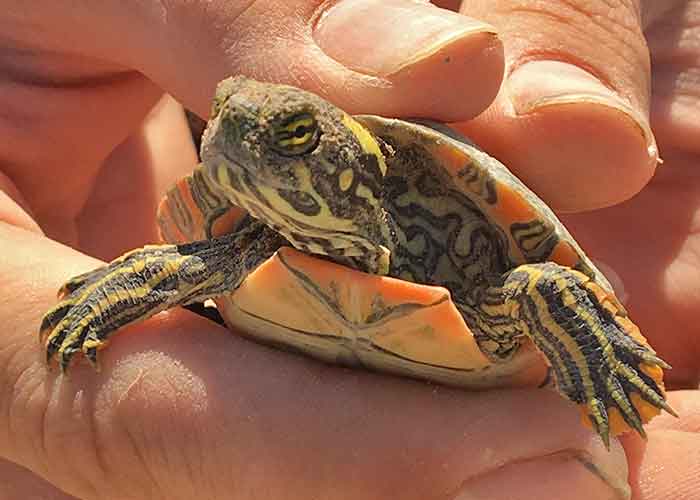
Western river cooter hatchling. (Ginny Seamster)
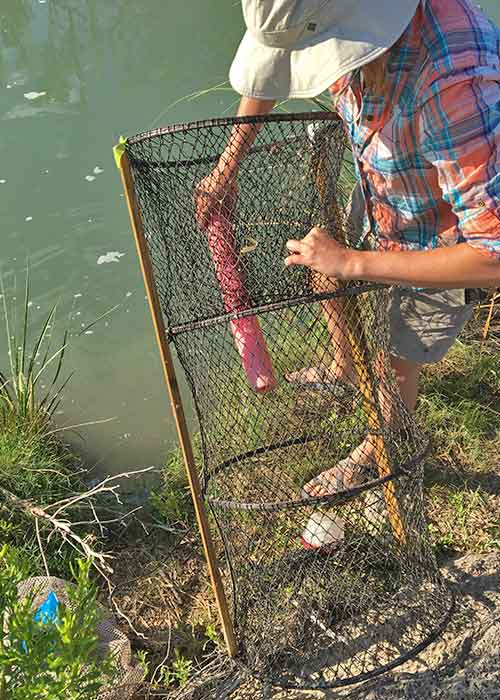
Dr. Mali checking a hoop net trap. (Ginny Seamster)
Remember the story of the turtle and the hare? Well, contrary to popular opinion, not all turtles move slowly. In fact, it can be quite challenging to collect data on them, especially when their inclination is to slip into the water as soon as they hear you coming.
Dr. Ivana Mali and several students at
Eastern New Mexico University are finding the
Western River Cooter to be one such speedy turtle. Since almost nothing is known about the biology of this state threatened species, Dr. Mali is revisiting historic positive localities as well as finding new positive detections in order to gather baseline data and begin long term monitoring programs. She is also comparing two techniques for surveying the cooter population in southeastern New Mexico, and is working with the students to fine tune their baiting technique for the approach that involves capturing turtles.
Using funding from the Share with Wildlife program, Dr. Mali is capturing turtles in
hoop net traps baited with shrimp or sardines (apparently the cooters don’t like mangos, which is ironic since they are vegetarians!) and marking the adults so that they can be identified in future as having been previously captured. They are comparing success rates of the two different baits and seeing how well the hands-on, mark-recapture technique compares to a completely hands-off, distance sampling approach. Distance sampling involves detecting turtles that are basking, recording the location with a GPS, and determining the distance from the observer to the basking spot. This is no easy feat since the cooters may bask on a variety of surfaces at the water’s edge, including branches of downed trees that overhang the water, and will submerge themselves the second they detect the surveyors’ kayak.
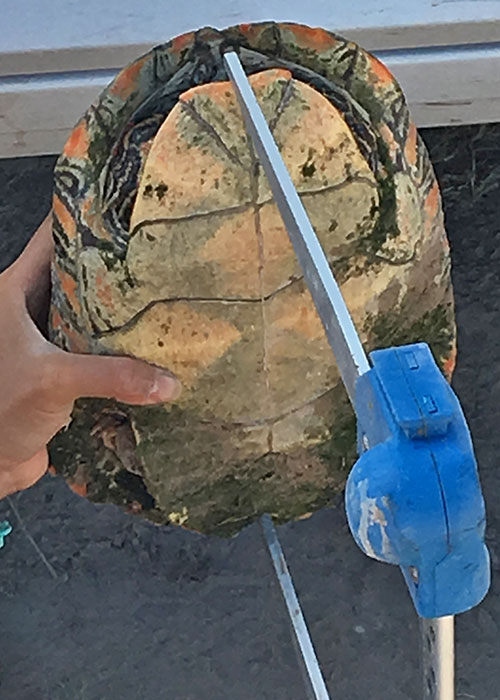
Measuring adult cooter. (Ginny Seamster)
In spite of the turtle’s particular and elusive ways, Dr. Mali is having good success with both survey techniques. She is capturing turtles of all ages, including hatchlings (any turtle nerd knows this is particularly difficult!), in her traps and has seen as many as 44 turtles basking or along the 1,400 m of river’s edge during a single distance survey. Finding the hatchlings is especially encouraging, though, given recent flooding events along the Black River, only time will tell how many of these babies survive to adulthood.
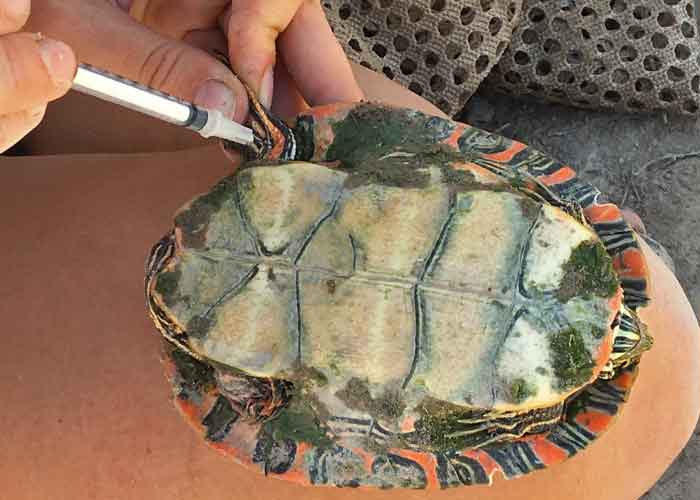
Taking a blood sample from a cooter. (Ginny Seamster)
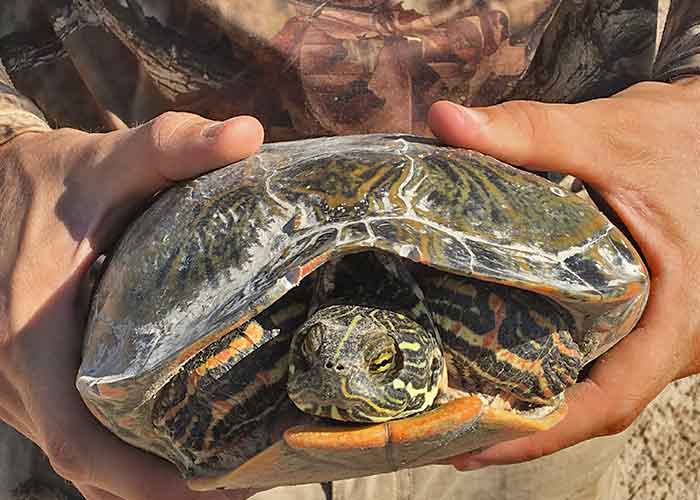
Holding adult cooter. (Ginny Seamster)
View more project highlights from the Share with Wildlife mission to assist all New Mexico wildlife in need, no matter what species.





